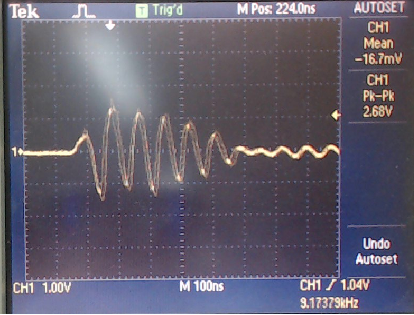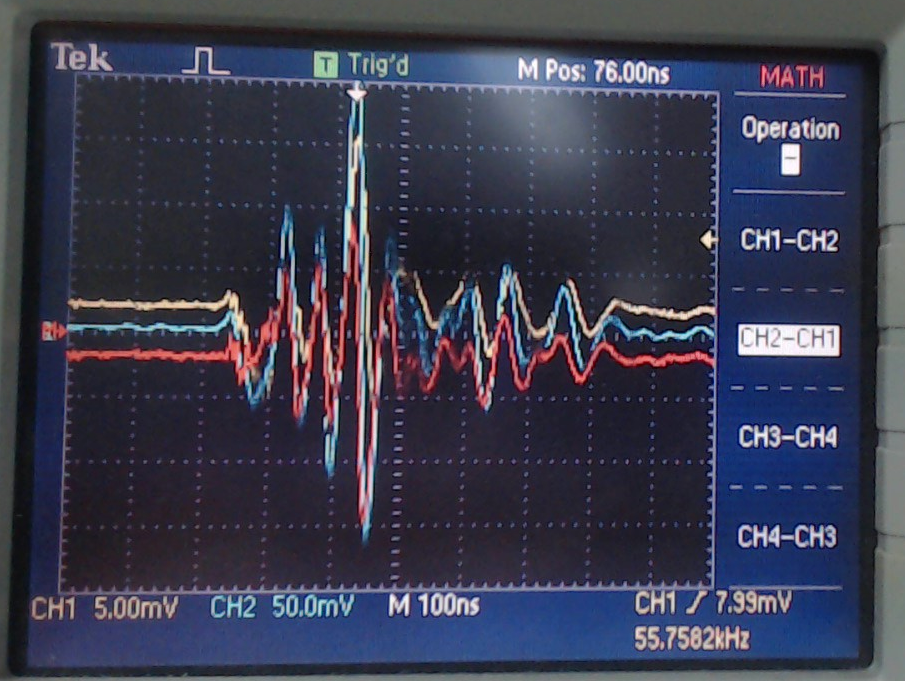Other Parts Discussed in Thread: TINA-TI, , THS3201, OPA847, LMH3401EVM
Tool/software: TINA-TI or Spice Models
Hi, I'm a newbie in analog design.
I try to implement an amplifier, but my PCB board always falls in noise as following figures:
Schematic:
PCB layout:
Noise:
Please give me some hints to solve this problem.
Thanks,



